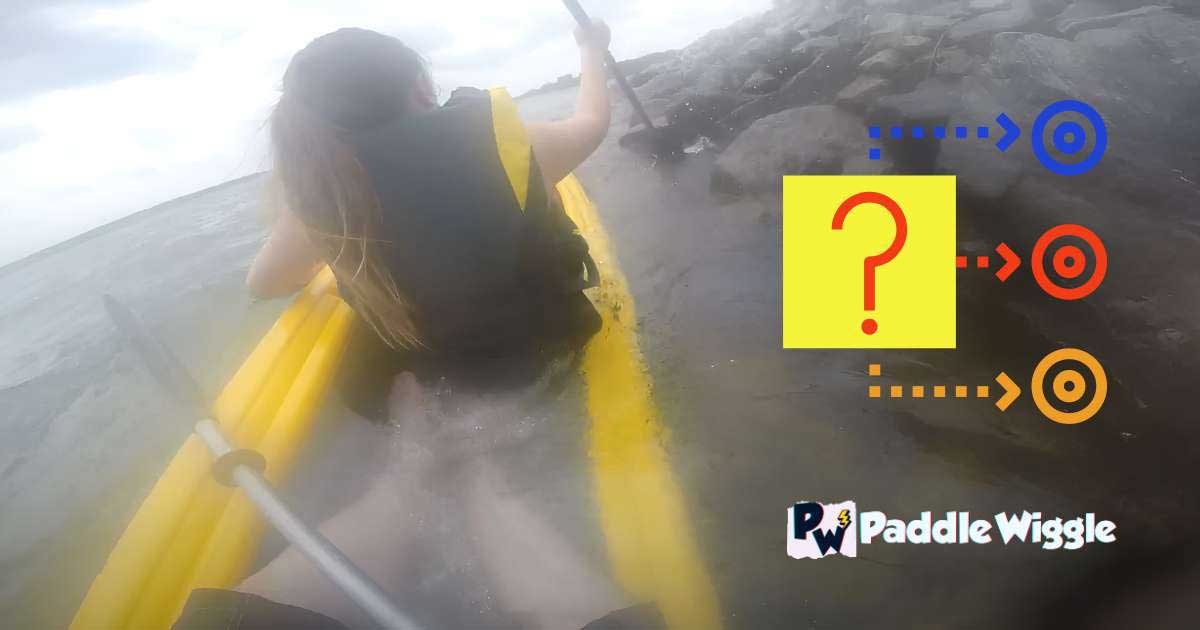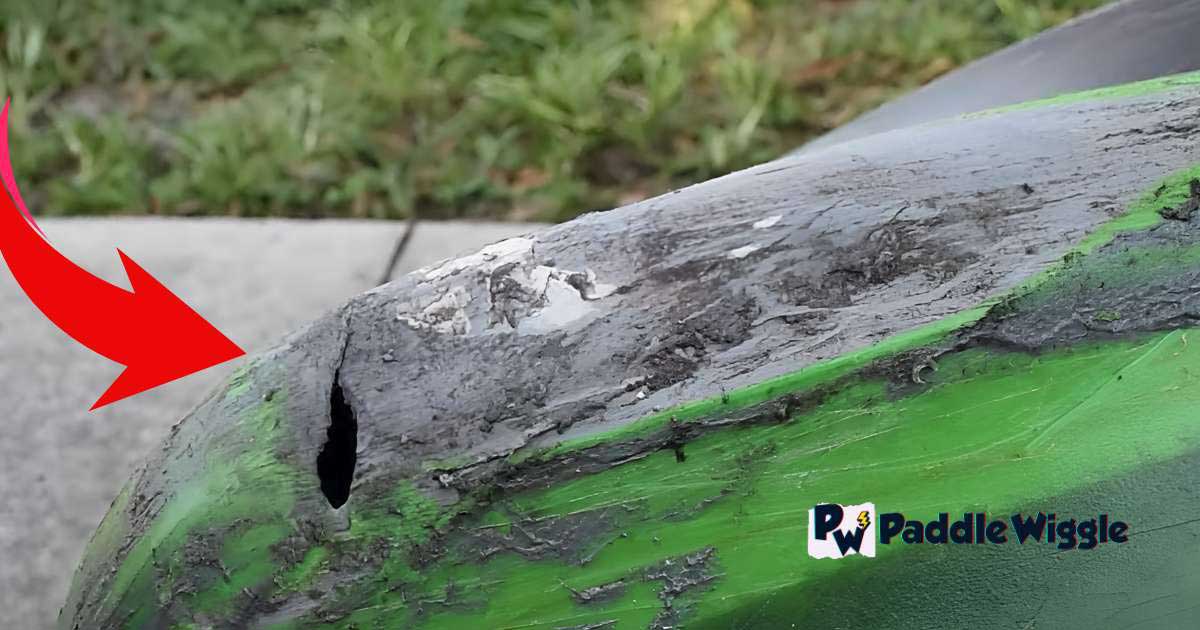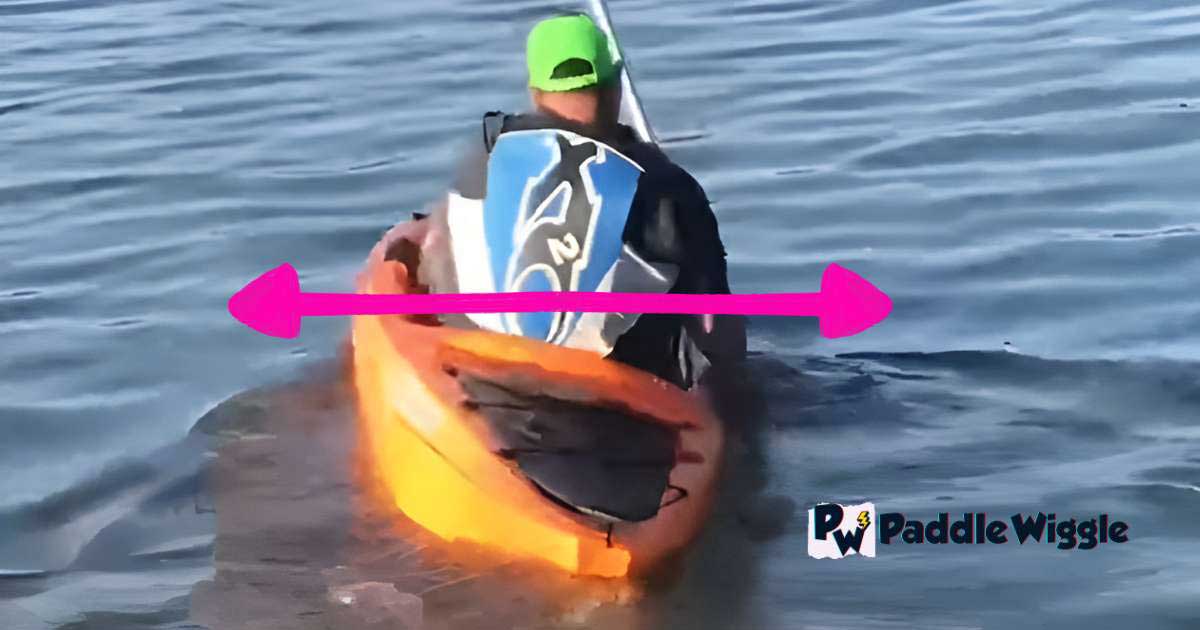Have you ever wondered if a kayak can sink? It’s not just about you! This age-old question beckons adventurers for years. While it may seem implausible, the answer is yes, a kayak can indeed sink. However, fear not, for such an occurrence is exceedingly rare.
In the rare cases when a kayak sinks, contributing factors are typically at play. Damage to the hull, such as punctures or cracks, can compromise its integrity and allow water to enter. This compromises the kayak’s buoyancy and increases the likelihood of sinking.
That’s why you’ll need to inspect your kayak regularly to ensure it remains structurally sound.


Contents
Debunking the Truth About Kayak Sinking
While it is true that kayaks can sink, it’s important to understand the facts and dispel any unnecessary worries.
So, tighten your life jackets and dive into the truth about kayak sinking!
It is true that kayaks can sink. But it’s crucial to understand the facts and not let unnecessary worries consume us.
Like any watercraft, kayaks have the potential to sink under certain circumstances. But these instances are relatively rare. And should not discourage you at all.
Misconception 1: Capsizing always leads to sinking


Fact: Capsizing, when a kayak flips over in the water, does not automatically mean the kayak will sink. In fact, most capsized kayaks remain afloat. Thanks to their buoyant construction! Kayaks can withstand being upside down and still provide a stable platform for the kayaker to recover and regain control.
Misconception 2: Kayaks sink easily and frequently
Fact: Contrary to popular belief, kayak sinking is a rare occurrence. Kayaks are designed with buoyancy in mind, allowing them to stay afloat in most situations. While there is a small chance of a kayak sinking, it is typically due to specific circumstances and not a common occurrence during regular kayaking adventures.
Misconception 3: Kayaks are prone to hull damage, leading to sinking
Fact: While it is possible for a kayak’s hull to sustain damage, such as punctures or cracks, this does not automatically result in sinking. Kayaks are constructed with durable materials and reinforced hulls that can withstand minor damage. Even if the hull is compromised, a kayak would require significant damage or multiple breaches to sink completely.
Misconception 4: Overloading a kayak will cause it to sink
Fact: While respecting a kayak’s weight capacity is important, slight overloading does not instantly lead to sinking. Exceeding the weight limit might cause the kayak to sit lower in the water, affecting stability. But it is unlikely to result in immediate sinking. Nevertheless, adhering to weight guidelines is essential to ensure optimal performance and safety.
Factors Influence Kayak Sinking


A few important things can affect how stable a kayak is in the water. Let’s have a look at these factors;
Weight distribution
How the weight is spread out in a kayak affects how stable it is. If too much weight is on one side, the kayak can become unsteady and more likely to tip over. To keep it balanced, it’s important to sit in the middle of the kayak and use compartments for storing gear. Think of it like sharing toys on a see-saw – if one side has too many toys, it will tilt!
Paddler skill level
The person’s skills and experience paddling the kayak also influence its stability. Beginners might find it harder to stay balanced, especially in rough water or tricky conditions. As you practice and learn, you’ll get better at using the right techniques and staying steady. It’s similar to riding a bike – it takes practice to stay upright!
Environmental conditions
The conditions in the environment where you’re kayaking can impact stability too. If there are strong winds, big waves, or fast currents, it becomes more challenging to keep the kayak stable. Before you go kayaking, it’s important to check the weather and the water conditions. It’s like choosing the right time to play outside – you don’t want to go out when it’s really windy and hard to stay balanced.
Potential scenarios for kayak sinking
While kayaks are designed to stay afloat, there are certain situations where they might be more likely to sink. Let’s explore these scenarios.
Capsizing and staying overturned
If a kayak flips over and stays upside down, it can lead to potential sinking. This can happen if the paddler loses balance or encounters strong waves or currents. Knowing how to right the kayak and get back inside after a capsize is important to prevent it from sinking.
Hull damage


If the bottom part of the kayak, called the hull, gets damaged, it can lead to sinking. This can occur if the kayak hits rocks or sharp objects or gets scraped against something hard in the water. Taking care to avoid such hazards helps prevent hull damage and keeps the kayak floating. And it’s that easy!
Overloading the kayak
Putting too much weight in the kayak can make it sit lower in the water and become unstable. If the weight exceeds the kayak’s limit, it might take on water and eventually sink. It’s important to follow the weight guidelines the kayak manufacturer provides to keep it buoyant.
How to Prevent a Kayak from Sinking
Keeping a kayak from sinking is crucial for a safe kayaking experience. According to the previous factors, there are ways how you can reduce the risk and keep your kayak safe and upright.
Stay centered and balanced


It’s important to evenly distribute the weight inside the kayak. Too much weight on one side can make the kayak unstable and more likely to tip over.
So, when you’re seated in the kayak, keep your body centered and balanced. Avoid sudden movements or leaning too far to one side, as the kayak’s stability can be blocked.
Imagine you’re a tightrope walker trying to stay balanced on a thin rope!
Avoid rough water or unfamiliar conditions
If you’re still building your kayaking skills, it’s best to stick to calm waters and familiar areas. Avoid areas with strong currents, large waves, or unpredictable conditions until you feel more confident. You may want to challenge yourself but not immediately jump into the hardest levels.
Learn proper paddling techniques
Learning how to paddle correctly helps you stay in control and maintain stability. Use your paddle to move smoothly through the water, keeping it balanced on both sides.
It’s simple – you need to use the right motions and balance to stay upright. The more you practice, the better you’ll become!
Be aware of the environment
Understanding the environment around you is crucial. Check the weather forecast before heading out, and avoid kayaking in severe conditions like strong winds or storms. Also, be mindful of the water conditions, such as waves or fast currents, as they can impact kayak stability.
It’s like knowing when it’s safe to go swimming – you wouldn’t want to jump in during a thunderstorm!
Avoid overloading
Don’t exceed the weight limit recommended for your kayak. Overloading can make the kayak sit lower in the water and make it less stable. Stick to the weight guidelines provided by the manufacturer to keep your kayak floating smoothly.
Maintain your kayak
Regularly inspect your kayak for any signs of damage, such as cracks or leaks. If you notice anything concerning, have it repaired before using the kayak? Taking care of your kayak ensures it remains in good condition and reduces the risk of sinking.
What to Do if Your Kayak Starts to Sink
Kayaking is an exciting and fun adventure, but sometimes unexpected things can happen.
Imagine you’re out on the water, enjoying a beautiful kayaking day when your kayak starts to sink unexpectedly! It can be a scary situation, but don’t worry! You can handle this unexpected challenge and keep yourself safe by knowing what to do.
Let’s explore the steps you should take if your kayak starts to sink.
Put on your life jacket first!
If you aren’t already wearing a life jacket, put it on immediately. A life jacket provides buoyancy and keeps you afloat, even if the kayak sinks completely. It’s like having a superhero sidekick that keeps you safe in the water!
Stay calm and assess the situation
The first thing to remember is to stay calm. Panicking can make things worse. Take a deep breath and assess the situation. Is the kayak slowly taking on water, or is it sinking rapidly? Understanding the severity of the situation will help you make better decisions.
Perform a self-rescue
If the kayak is still partially afloat and you feel confident, you can try to perform a self-rescue. First, try to stabilize the kayak by shifting your weight towards the center. Then, use your paddle to paddle towards shallow water or a stable object, like a dock or shoreline. Once in shallow water, you can either empty the water out of the kayak or safely exit it.
Signal for help
If you’re in distress and need assistance, signal for help. Wave your paddle, use a whistle, or shout loudly to attract the attention of nearby boaters or people onshore. It’s important to let others know that you’re in trouble so they can come to your aid.
Learn More
Can A Kayak Sink?
Yes, a kayak can sink, but it is an infrequent occurrence. Kayaks are designed to be buoyant and stay afloat on the water.
They are crafted from inherent buoyancy materials, such as plastic, fiberglass, or composite materials. These materials allow the kayak to maintain its flotation even when exposed to water.
However, certain circumstances can increase the likelihood of a kayak sinking. We recommend practicing proper paddling techniques, maintaining proper weight distribution, and avoiding exceeding the kayak’s weight limits to minimize the chances of a kayak sinking.
What Causes A Kayak To Sink?
A kayak can sink if it gets filled with too much water, which we call “swamped.” A few things can make a kayak sink, like rough water, not putting weight in the right places, or if the kayak gets damaged.
Rough water conditions mean the water is not calm and can have big waves or strong currents. If the kayak takes in too much water from the waves or if it gets wobbly because of the rough water, it might sink.
Putting weight in the right places is important for a kayak to stay balanced. If there’s too much weight on one side or the kayak carries too much stuff, it can become off-balance and might tip over or get filled with water.
If the kayak gets damaged, like having a crack or a hole in its body, water can go inside and make it sink. Usually, kayaks have compartments that are sealed to keep the water out. But if the damage is too big or affects many compartments, the kayak can still sink.
Modern kayaks are designed with these compartments to help them float even if they have some damage. But if the damage is too bad or affects many compartments, the kayak might still be at risk of sinking.
Can A Sit-On-Top Kayak Sink?
Sit-on-top kayaks are designed to be less likely to sink than other kayaks. They have special features called “self-bailing” that help water flow out through small holes called scupper holes.
This means that if water gets inside the kayak, it can drain out through these holes, which helps keep the kayak from filling up with water.
But it’s important to know that even though sit-on-top kayaks have these self-bailing features, they can still be affected by too much water. If a lot of water gets inside the kayak, like during rough water or if it’s carrying too much weight, it can make the kayak less stable and more likely to sink.
Final Word
To sum it up, knowing what to do if your kayak starts to sink is really important to stay safe and have a great time kayaking. Just follow these step-by-step instructions to handle this unexpected situation confidently. Remember to stay calm, check what’s happening, try to rescue yourself if you can, call for help, stick with your kayak, and wait for help to arrive.
It’s good to understand that a kayak can sink, even for experienced kayakers. But if you’re prepared and know the risks, you can lower them and make your kayaking adventures even more enjoyable. And keeping yourself safe should always be your main concern when doing any water activities.
So, whether you’re new to kayaking or have experience, take some time to understand the possible risks and learn how to react if your kayak starts to sink. Follow those steps, and remember to pay attention to your surroundings.



